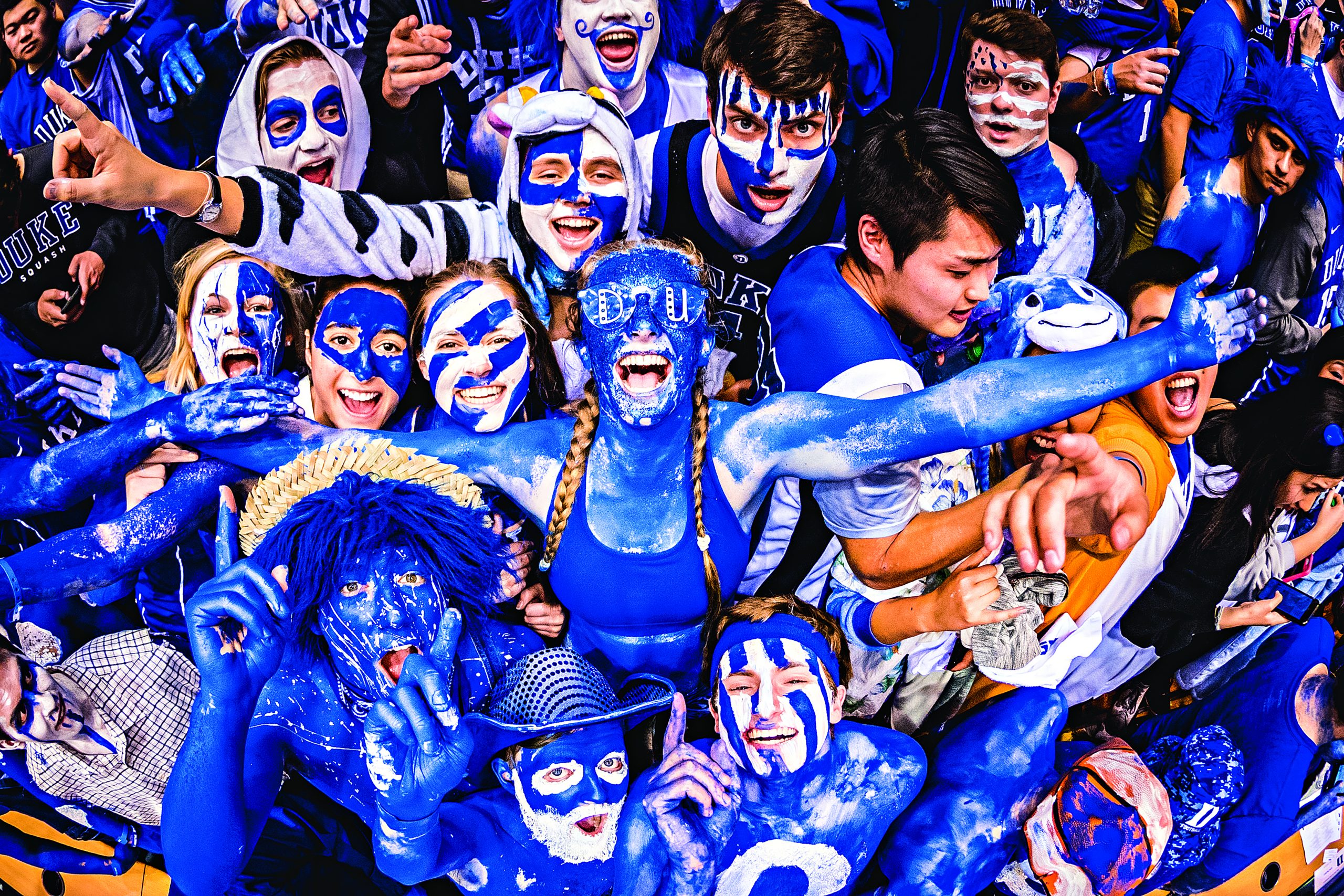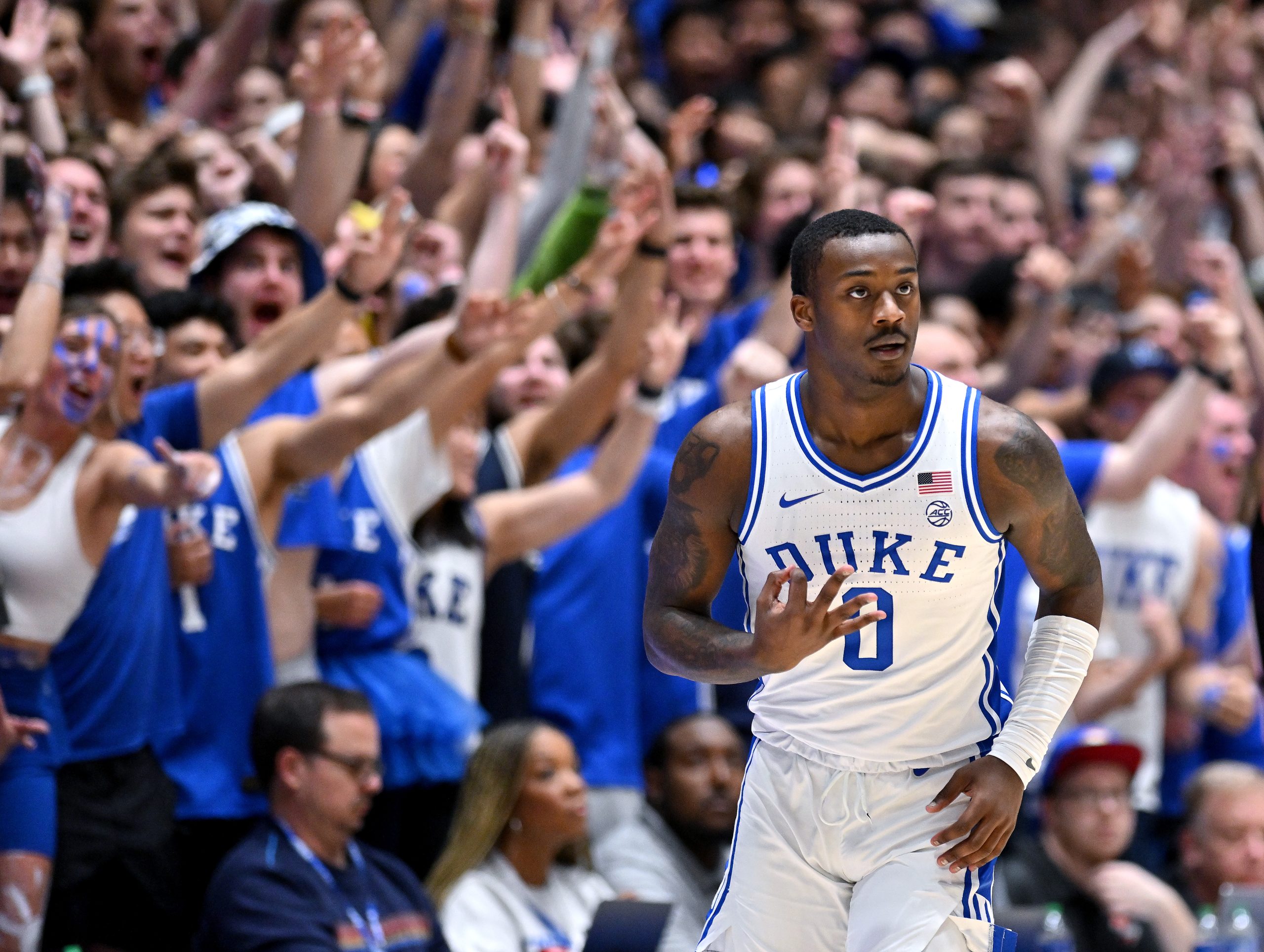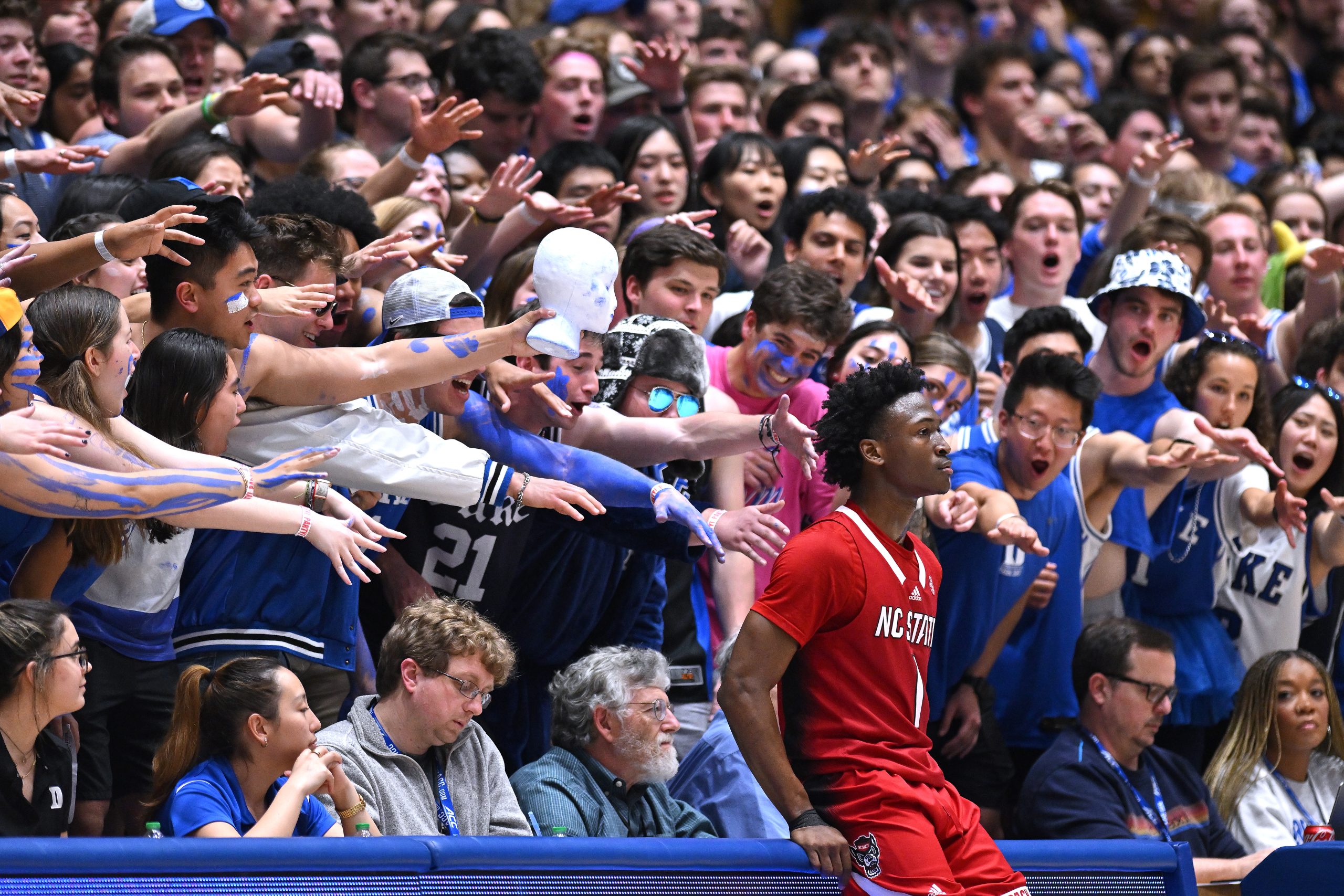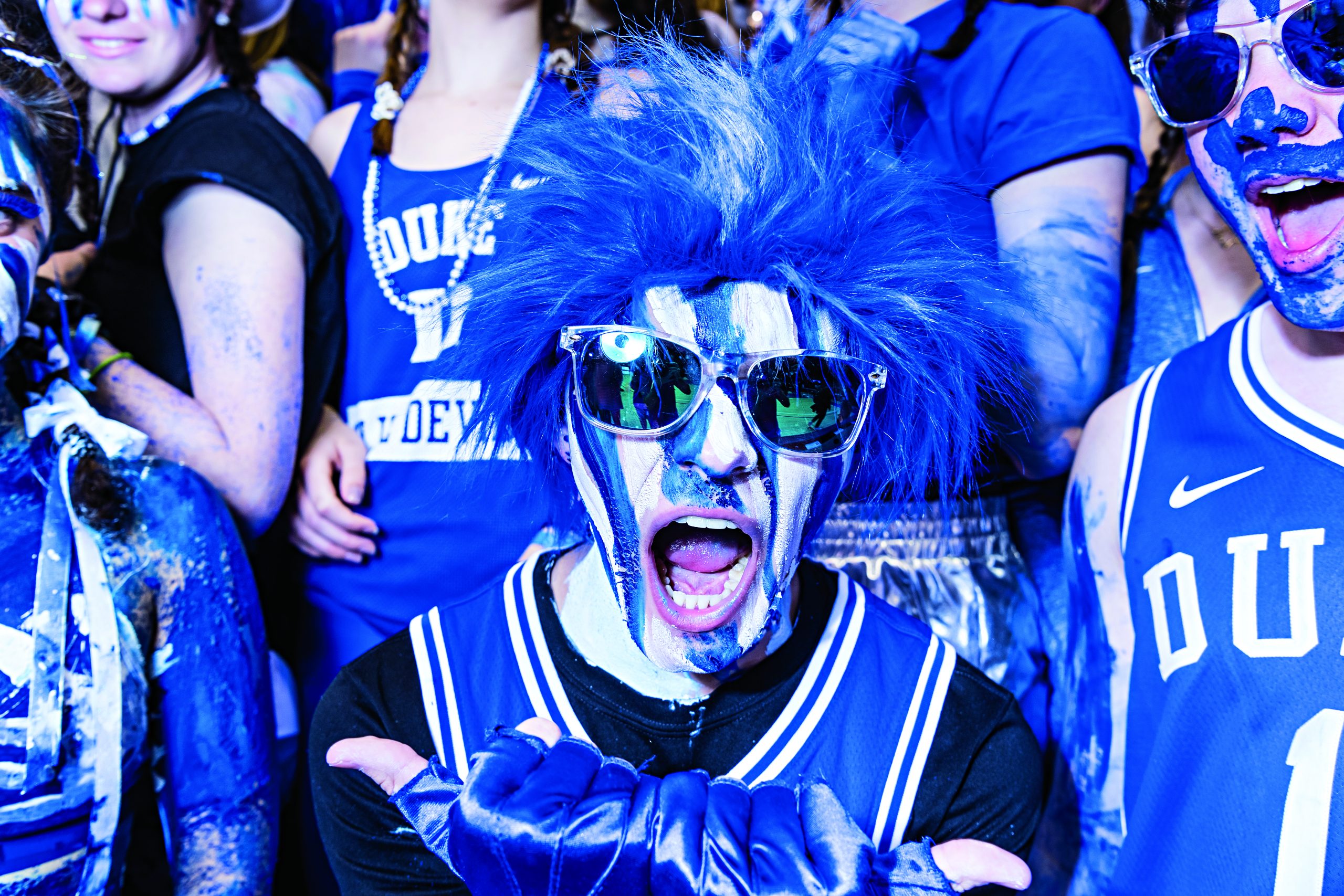Everyone knows the saying about imitation and flattery.
When you turn on a college basketball game this winter—pretty much any game will do—keep an eye on the home team’s student section. Look for the signs they hold up, the costumes they wear, how they wave and point and sway. Listen for the coordinated chants. Notice how often their response to the game is less reactive than proactive, how it’s organized and rehearsed.
When it is, you’ll be seeing the influence of the Cameron Crazies.

The Duke basketball student section didn’t invent every aspect of the modern college basketball fan experience, of course. But they had a hand in a lot of it, and it’s hard to argue they haven’t both mastered it and popularized it at an unprecedented level. The Crazies are the model, the template—as the late Al Featherston, a Duke alum and long-time Blue Devils beat writer, put it, “the standard by which all others are measured.”
Their history is somewhat less clear than their impact. The designers of what was then called Duke Indoor Stadium when it opened in 1940 had enough foresight to give the students priority courtside seating, and no doubt the old building saw its share of supportive crowds up through and beyond its rechristening as Cameron Indoor in 1972. (Legend has it that the Cameron students invented the “Air ball” chant in the late 1970s; it’s impossible to prove definitively, though nobody else offers a credible alternative.) But it wasn’t until sometime in the mid-1980s—not too long after Mike Krzyzewski arrived and began transforming a very good program into one of the greatest in college basketball history—that a place known for having very good crowds evolved into something…more.
It’s probably not a coincidence that the vibrant tent city known as Krzyzewskiville was established just outside Cameron Indoor around the same time. This was the era when the Duke student section went from supportive and enthusiastic to formally organized and intentionally impactful. It’s also when their national influence was established for all time.

You can identify an array of ingredients that contributed to making the Cameron Crazies what they are. Success was part of it, to be sure; it’s easier to get excited about the team you’re rooting for when that team is playing well and racking up wins. But there was and remains a symbiotic relationship between the Crazies in the bleachers and the Blue Devils on the court; they feed on each other’s intensity and push each other to give their all, no matter what side of the sideline they’re on.
Part of it is simple physical reality. Those who’ve only seen it on TV have a sense of what those who’ve been there know intimately: The students at Cameron Indoor are very close to the court. They cover an entire sideline, their noise and energy and reaching arms all seemingly ready to devour the court and everyone on it.
“My first time coming out was for the Blue-White scrimmage back in 1996—I came out and was like, Woah, the students are right there,” says Blue Devils associate head coach and former All-American Chris Carrawell. “It just hits you right in the face. It’s like going to your favorite musician’s concert. The crowd is going to be electric.”

Assistant coach and former three-time Blue Devils team captain Amile Jefferson builds on that analogy. “When I was in school, we started calling it ‘Club Cameron’ for big games, because we knew it was going to just be unbelievable,” he says. “The Crazies bring an unbelievable amount of intensity and emotion to our games. In big games, you could literally see the court shaking. You can’t hear yourself…it starts to echo. It’s deafening. It’s a bucket list thing. If you’ve never been there, you’ve just gotta feel and experience it for yourself.”
Proximity matters, and intensity matters, and without both of those factors the impact of the Crazies would not be what it is. But there is at least one more vital ingredient that sets these students apart, one that countless other student sections have tried to emulate but have never quite matched: The Crazies are clever.
The signs of the Duke students’ originality and creativity are audibly and visually evident whenever their Blue Devils take the court. For each generation, it’s part tradition—the honor of maintaining the innovations that the students who came before them brought to the gym—and evolving in a way that honors what came before. It’s the signs. The face paint and wigs. It’s the hexing. It’s Speedo Guy and Cookie Monster. It’s knowing everything there is to know about the opposing team’s players, and making sure those players know it, too.
And, of course, it’s the chants.

Every player from every generation has their favorites. Carrawell is fond of the one that immortalized his former teammate: Who’s your daddy? Battier! Jefferson loved the chants that reacted to a great start. “When somebody’s playing real well early in a game, and that one guy will sometimes have more points than the opposing team, they’ll be like Gray-son’s win-ning! Gray-son’s win-ning! And you look up, and Grayson has 13 and the other team has 8.”
There are countless others, so many specific to opposing players and teams and moments in time. Many of them celebrate Duke players—chanting One More Kid! in the direction of Grant Hill’s parents on senior night remains an all-timer—while others, of course, poke (mostly) good-natured fun at opposing coaches and players. As times have changed and society has evolved, some of what the Crazies did or yelled in the past wouldn’t necessarily fly today; but even at the time, concern that they would “go too far” was more about media (like the national broadcaster who was once insistent on a time-delay in case the crowd got a little too colorful) or visitors being intimidated by the Crazies’ enthusiasm. For the most part, visiting players and coaches have acknowledged the fans’ effort and impact on the game and appreciated the chance to compete in an environment unequaled anywhere else in the country.
Famously, three years ago, that enthusiasm briefly drew the ire of Coach K, who thought the students had crossed the line with a chant inviting Blue Devil alum and current Pitt head coach Jeff Capel to “sit with us.” Afterward, Krzyzewski acknowledged that he’d misheard the chant and reacted only out of protection for one of the Blue Devils’ own—ironically the very motivation behind the students’ chant. Even in a rare moment of misunderstanding, the intentions of the fans and the teams were fully aligned.
At their best and most legendary, one truth about the Cameron Crazies stands above all others: They are an integral part of the Duke basketball experience, impacting the physical environment in a way that absolutely can and often does affect the final score. “It’s crazy,” Carrawell says. “It’s worth 20 points.”

The exact number is impossible to measure, of course. But that hardly matters. What matters is that the impact—on the games, on the team, on the entire Duke community, the Crazies very much included—is undeniable.
“They give our team purpose, to be honest,” Jefferson says. “It’s a family, people coming together for something bigger than themselves, because it’s Duke. It’s about us. We’re all in it together. The Crazies bring an amazing amount of energy and life into that gym. It’s a different level of will—a will we try to instill in our players. Our fans have that kind of will, so it’s pretty cool to see. And once they’re all in there, it’s up to us to make sure that we reciprocate that kind of passion by going out and playing our butts off every night.”
Carrawell puts it succinctly: “It’s an honor and a privilege to play in front of the Cameron Crazies.”
Photos via Getty Images.